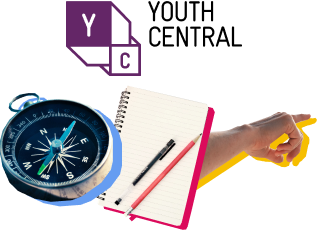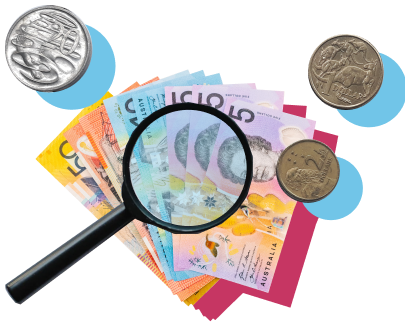Everyone needs a bank account. You’ll need one if you have a job, want to keep your money safe, travel, rent a property or buy something online.
But how do you get one? And which one is right for you?
99%
of Australians have a bank account
Pick the right bank for you
In Australia, we have lots of different banks to choose from. It can be confusing to know which bank to choose.
Don’t let all the marketing confuse you. Start small and keep it simple. All you will need is an ‘everyday’ bank account (and maybe a savings account).
What is an ‘everyday’ account?
A simple bank account that offers internet banking and a debit card. This is sometimes called a ‘transaction’ bank account.
My bank gave me a better deal when I told them I wanted to switch banks.
Get an ‘everyday’ bank account
Most of the major banks offer what’s called an ‘everyday’ bank account (also known as a transaction account).
An everyday bank account is for your regular everyday spending. When you open an account, you also get a debit card for it.
This card allows you to pay for things or take your money out at an ATM. Every time you use your card the money comes out of your account.
How old do you need to be?
Many major Australian banks will allow anyone over 14 to open a simple everyday banking account (as long as you have an Australian residential address).
Most of the time this can be done online. Sometimes though you might need to go into a bank office (branch) to complete the process. Most major banks will be in your local shopping centre.
Shop around to compare what is on offer from a couple of different banks or other financial institutions.
Get a savings account
Once you have an ‘everyday’ bank account, you may want to open up a savings account.
Savings accounts are different to everyday bank accounts. You won’t get a debit card. But you will earn interest on your savings.
Interest is money you earn from the bank. For example, if your savings account has an interest rate of 0.4% per annum and you have $1000 in the account, you will earn $40 after a year.
The more money you have in your savings account, the more interest you’ll earn. It’s free money! The longer you keep your money in your savings account, the more it will grow.
Look for a bank account with a high-interest savings rate so that you earn interest on your savings.
Prove your identity
To open an account you need proof of identification (also called ID).
You can prove your ID by showing things like your passport, driver’s licence or learner permit, birth certificate, government benefits card, or citizenship papers.
Say no to fees
Fees are what banks charge you for an account. Fees are usually charged each month. Some banks have no fees. Others charge lots of fees.
When choosing an account, look for one with no fees. If there are none, look for one with the lowest fees possible. Some banks will charge no fees for student accounts.
Keep it simple! Choose a bank account that pays no fees (if you can).
Before you open a new bank account ask if you will be charged any fees. Sometimes these can be hidden so it’s a good idea to ask directly.
Should you ever change banks?
Once you find a bank that works for you, it doesn’t mean you have to stick with that bank for the rest of your life.
Your needs will change as you go through life. It’s important to keep making sure your bank is meeting your needs and isn’t charging you unnecessary fees and charges. If you’re not happy with your bank, change to another one.
Signing up with more than one bank
You may also decide to have your everyday spending account with one bank, and your savings account at another bank. Lots of people do this!
This can be helpful if you want to make it hard to access to your savings, and reduce your temptation to spend.
I have more than one bank account with multiple banks to get the right accounts that work for me.
Remember:
- Get an everyday bank account
- Get a savings account for long-term goals
- Avoid paying fees as much as possible
- Get online and compare everyday accounts offered by the banks
- Look for bank accounts that charge little or no fees, like student accounts

Ready to put your skills into practice?
Get comprehensive guidance on Money at Youth Central.






